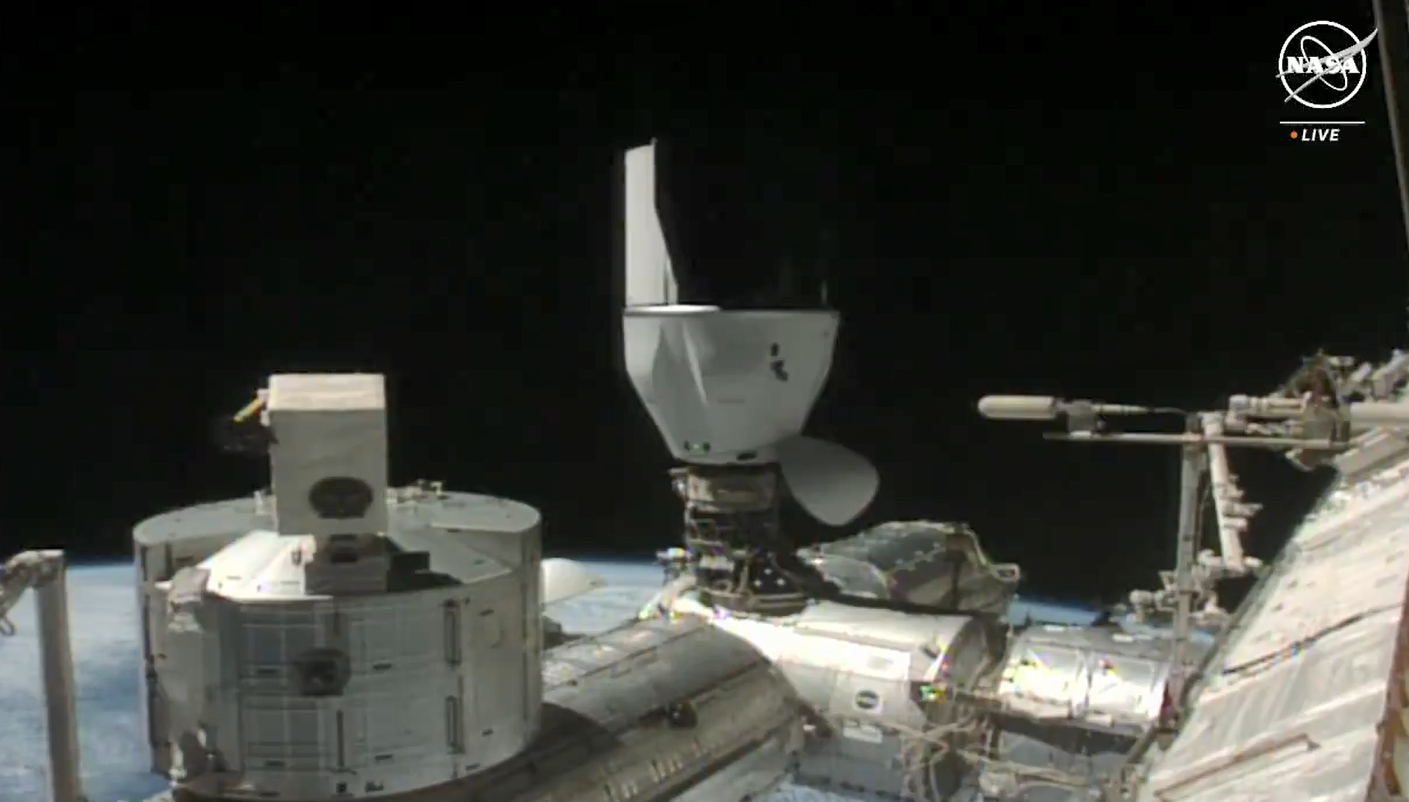23.03.2024

The SpaceX Dragon cargo spacecraft docks to the International Space Station’s Harmony module at 7:19 a.m. EDT Saturday, March 23. Credit: NASA TV
While the International Space Station was traveling more than 262 miles over the South Atlantic Ocean, a SpaceX Dragon cargo spacecraft autonomously docked to station’s Harmony module at 7:19 a.m. EDT, with NASA astronauts Loral O’Hara and Michael Barratt monitoring operations from the station.
The Dragon launched on SpaceX’s 30th contracted commercial resupply mission for NASA at 4:55 p.m. EDT, March 21, from Space Launch Complex 40 at Cape Canaveral Space Force Station in Florida. After Dragon spends about one month attached to the space station, the spacecraft will return to Earth with cargo and research.
Among the science experiments Dragon is delivering to the space station are:
Monitoring Sea Ice Thickness and Wave Height
(Nanoracks-Killick-1) is a CubeSat that measures sea ice parameters using Global Navigation Satellite System (GNSS) reflectometry or reflected signals. This monitoring system could contribute to a better understanding of important ocean phenomena and improved weather and climate models.
New Sensors for ASTROBEE
The Multi-resolution Scanner (MRS) Payload for the Astrobee (Multi-Resolution Scanning) tests a new set of sensors to support automated 3D sensing, mapping, and situational awareness functions. These systems could support future Gateway and Lunar surface missions by providing automated defect detection, automated and remote maintenance, and autonomous vehicle operations.
Improving Efficiency of Quantum-Dot Solar Cells
The Nano Particle Haloing Suspension payload tests the controlled assembly of nanoparticles in a liquid solution. A process called nanoparticle haloing uses charged nanoparticles to enable precise particle arrangements that improve the efficiency of quantum-dot synthesized solar cells. Conducting these processes in microgravity provides insight into the relationship between shape, charge, concentration, and interaction of particles.
Observing Photosynthesis in Space
Advanced Plant Experiment-09 (APEX-09), also known as C4 Photosynthesis in Space, observes carbon dioxide capture and mechanisms in two types of grasses. Researchers hope to learn more about photosynthesis and plant metabolism changes overall in space. Knowledge gained could support development of bioregenerative life support systems on future missions.
These are just a few of the hundreds of investigations currently being conducted aboard the orbiting laboratory in the areas of biology and biotechnology, physical sciences, and Earth and space science. Advances in these areas will help keep astronauts healthy during long-duration space travel and demonstrate technologies for future human and robotic exploration beyond low-Earth orbit to the Moon through NASA’s Artemis missions and eventually Mars.
Quelle: NASA
